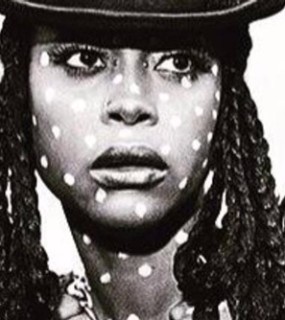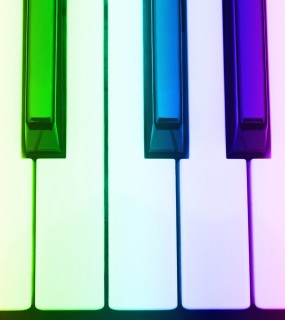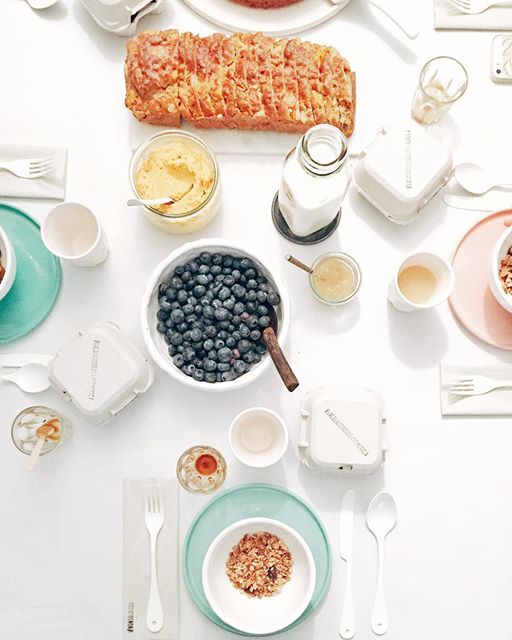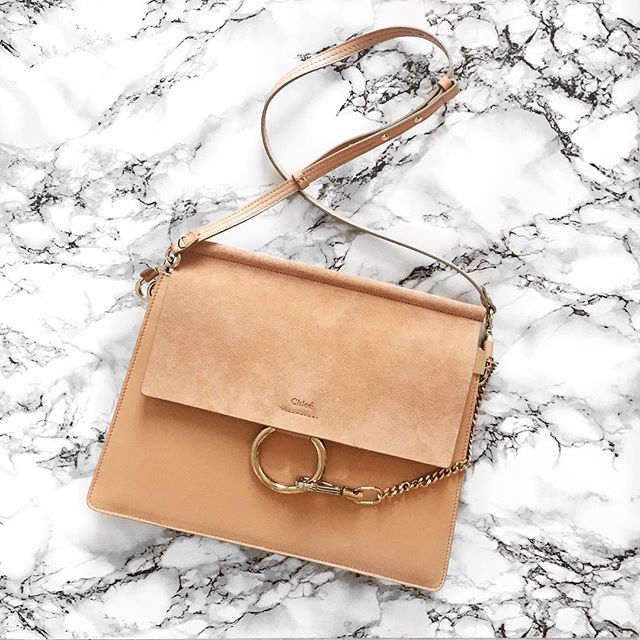Beach House – All Your Yeahs
“This one’s going to be in near darkness,” mutters the man on the door, and Beach House emerge in so much gloom that if one of them mislaid a contact lens, there would be a health and safety incident. It’s a typically unconventional entrance from a band who are doing things their way.
As pop’s ever-baffling array of genres now ranges from skwee to (really) charred death, Baltimore’s Victoria Legrand and Alex Scally’s music doesn’t fit comfortably into any of them. Although their six albums have been labelled dreampop and shoegaze, neither tag quite captures their blend of the Cocteau Twins, 60s folk, the gentler side of My Bloody Valentine and the Ronettes’ wind-tunnel pop.
Read the rest of this article at The Guardian
Chromatics – “Girls Just Wanna Have Fun” (Cyndi Lauper Cover)
We’ve been waiting a long time for Chromatics to give us Dear Tommy, their latest much-anticipated klonopin-disco odyssey, and it’s still set to arrive sometime in the indistinct and hopefully-near future. But the group has steadily been cranking out entrancing new songs: “Just Like You,” “I Can Never Be Myself When You’re Around,” “In Films,” “Shadow.” And over the summer, in a MANGO commercial, we heard a bit of the group’s cover of “Girls Just Wanna Have Fun,” the pop classic that Cyndi Lauper made famous in 1983. As it turns out, the group are planning to release a massive digital single with seven different versions of that song, and it’s coming out tomorrow. They’ve made videos for two of those versions: “Girls Just Wanna Have Some,” which turns the original song into a dazed and icy twinkle, and “Girls Just Wanna Have Dub,” which removes all the drums from that dazed and icy twinkle and turns it into even more of a dreamy fantasia.
Read the rest of this article at Stereogum
Blood Orange – Sandra’s Smile
In an interview with The Cut back in August, Sybrina Fulton was asked if she had yet forgiven George Zimmerman, the neighborhood-watch volunteer who shot and killed her son, Trayvon Martin, in a Florida suburb in 2012. “I’m very honest about my feelings and I have not gotten there,” Fulton said. “Everybody forgives in their own time. I’m just not there. I will never forget, and I have not forgiven.” The interview occurred just a few days after clashes between police and protesters had reached a boiling point in Ferguson, Mo., and a week after Fulton met with the mother and sister of Sandra Bland, the 28-year-old black woman found dead in a jail cell in Waller County, Texas after being detained for a minor traffic violation in July.
Read the rest of this article at Pitchfork
Logic – Fade Away
By now Logic fans know that he might be one of the most underrated artists in hip-hop. His recently released track “Fade Away” off The Incredible True Story features Logic letting everyone know that they will know his name.
Fans are just one week away from Logic’s highly anticipated sophomore album The Incredible True Story, which comes a little over a year after his debut album Under Pressure. “Fade Away” is the newest track that has been leaked from Logic and the Visionary Music Team. It features a smooth beat that rides really well in the listeners ear. It’s a little preview of what’s to come and the song is without a doubt Logic’s declaration that everyone will know Logic’s name before he fades away. “Fade Away” was a also produced by Logic which shows how much of multi-talented individual he is.
So far fans have been treated to “Young Jesus” featuring Big Lenbo and “Like Woah.” Both tracks were monstrous hits with his fans who are eagerly awaiting the arrival of The Incredible True Story. Logic is teasing a pretty momentous album an even visited Comic Con to talk about his album as well as a lot of the concept art for the album. The Incredible True Story is scheduled to be released next Friday, November 13, Empty Lighthouse will have a full review of the album upon its release.
Read the rest of this article at Empty Lighthouse Magazine
Frankie Cosmos “Young” Official Single
I saw Frankie Cosmos play an afternoon show during CMJ this year, and she hinted that a new album would be on the way shortly. Greta Kline (aka Frankie Cosmos, formerly Ingrid Superstar) is an unusually prolific musician, but the release of her full-length debut Zentropy last year marked her first foray on a traditional label instead of Bandcamp. Her follow-up EP Fit Me In will come out next week, 11/12, via Bayonet Records. Today she’s shared another track off the EP, “Young,” an airy, ’80s-influenced homage to the ever-confusing construct of youth. It follows the barely-there, New York daydream love song “Sand.”
Read the rest of this article at Brooklyn Magazine
News
Bad Boy For Life: A look back at the rap empire Sean ‘Puff Daddy’ Combs built
ng before he was Puff Daddy the hip-hop mogul, Sean John the clothing designer or Diddy the movie star and shameless vodka promoter, Sean John Combs launched a fledgling record label that would change the course of hip-hop in just a week.
It was the summer of 1994. His label Bad Boy Entertainment had just released the hypnotic groove “Flava in Ya Ear” by Craig Mack. It shot to No. 1 on Billboard’s Hot Rap Songs, but more than that, it cracked the Top 10 on the pop charts in what would prove the beginning of hip-hop’s dominance of mainstream music and American pop culture.
Within days of Mack’s hit, Bad Boy released the debut from its other flagship artist, a burly former crack dealer with a poetic flow who called himself the Notorious B.I.G. “Juicy” became an instant rap classic and cemented Bad Boy’s spot as a new leader in the genre.
The gamble clearly paid off. Combs is now known as one of rap’s early enterprising magnates, overseeing an empire that includes fragrances, beverages and a cable network.
“Bad Boy showed us it can be deeper than music,” said Bad Boy artist Machine Gun Kelly. “It showed us we can make our own clothes, make our own cologne. We can make bigger moves than music.”
On Wednesday, Combs, 46, added to his legacy when he surprise-released his album “MMM” as part of a larger push to reach out to a new generation of rap fans. The artist is also relaunching his imprint and has yet another anticipated album in the works.
Read the rest of the story at Los Angeles Times
Erykah Badu Speaks On New Mixtape: “It’s A Whole New Frequency”

This fall, Erykah Badu surprised many and pleased all when shedropped a remix of Drake‘s “Hotline Bling” and announced the impending arrival of a mixtape—which would be her first major solo project since 2010’s New Amerykah Part Two. And yesterday, Badu shared a preview of the tape’s second release, “Phone Down,” during alive video shoot on Periscope. Ever the master of creative platforms, Badu’s Soundcloud and Periscope flexing is some of the best promo work of the year.
In a conversation with The FADER, just after shooting her video and before a rehearsal for this weekend’s Soul Train Awards, which she’ll host, Badu said that her tape will drop during Thanksgiving weekend and that it’s “a whole new frequency for the planet.” For any other artist, that might seem like hyperbole, but if anyone’s capable of nudging the world into something new, it’s her.
Below, Badu speaks about why her new songs are about phones, her friendship with Drake, and her recent return to the stage as both actor and producer.
Read the rest of the story at Fader
Making Music With Color

In Steven Spielberg’s 1977 film Close Encounters of the Third Kind, the first conversation between humans and aliens is a duet of music and visuals. The film’s narrative doesn’t offer even a tentative explanation for the technology, but the viewer instantly understands what’s happening: Spielberg’s film uses color music—a system that claims to be a universal language of sound and color.
Mechanical color organs, built to visually represent or accompany sound, first appeared in the 18th century as instruments modeled on both the piano and the pipe organ. Spielberg’s fictional organ, in the legacy of these devices, was built to display the iconic note sequence played by the UFOs throughout Close Encounters: G, A, F, (one octave lower) F, (middle) C. In the film, a bank of lighted panels is located above the organist, structured into a visible spectrum that begins yellow on the left, transitions to blue in the center column, then continues to the right in a variety of reds and red-oranges. But while the music only contains five notes, the light board contains 72 colors arranged into six rows of 12. A traditional piano keyboard controls the light board: Pressing a key on the organ will both play its corresponding note and illuminate a color block, creating an audio-visual link between color and note.
This structure has been a common feature of color organs throughout their history. The earliest known example, proposed by the Jesuit priest Louis-Bertrand Castel in the 18th century, employed colored ribbons—the “ocular harpsichord,” he called it. By the late 19th century, the American inventor Bainbridge Bishop and the British painter A. Wallace Rimington had separately created devices that used carbon-arc lamps to produce bright flashes of color. In the 20th century, numerous reinventions of the device emerged, each nearly identical to its predecessors save for their differing schemes for mapping colors to notes. It’s striking, then, to learn that each of these nearly identical machines was developed independently: Every one of these inventors believed that their instrument was entirely unprecedented.
Read the rest of the story at The Atlantic





